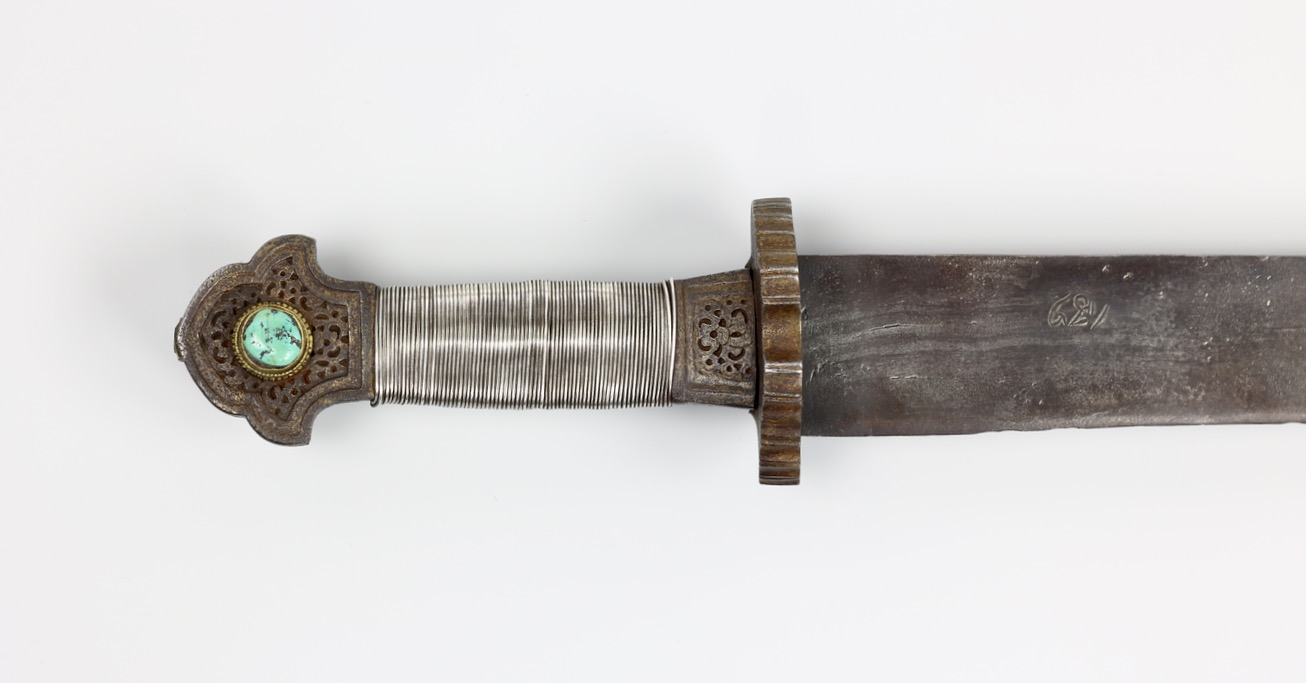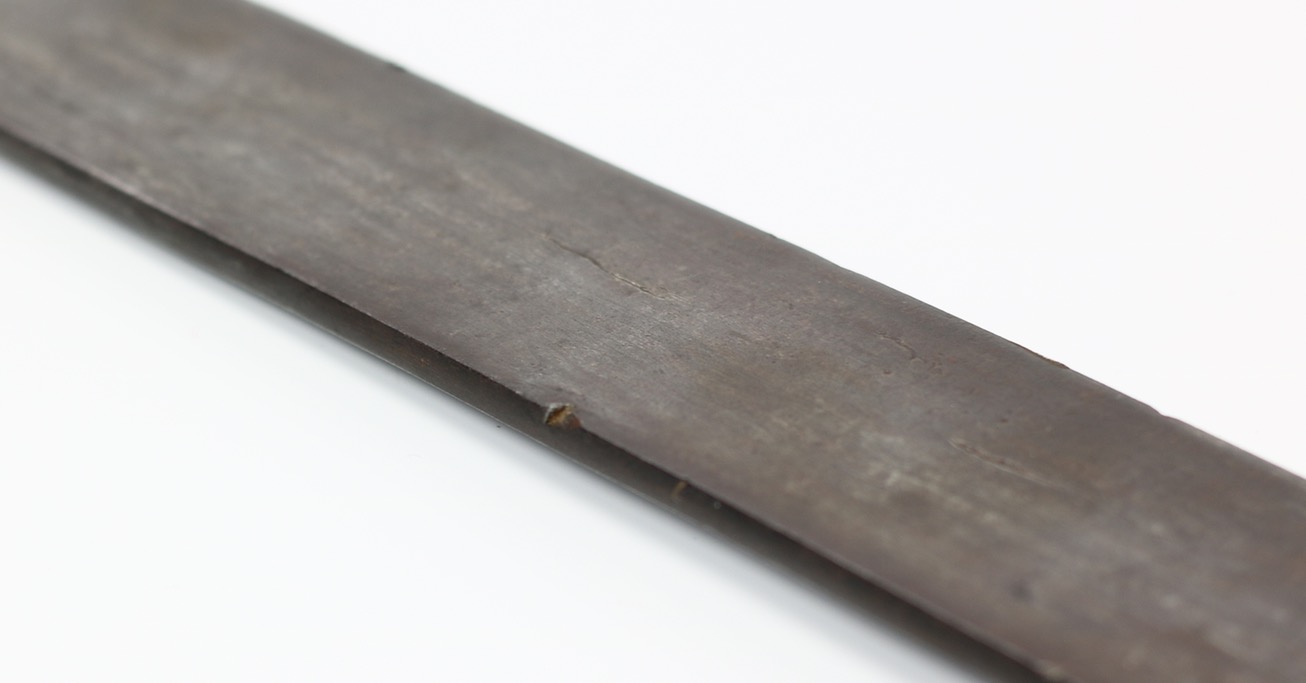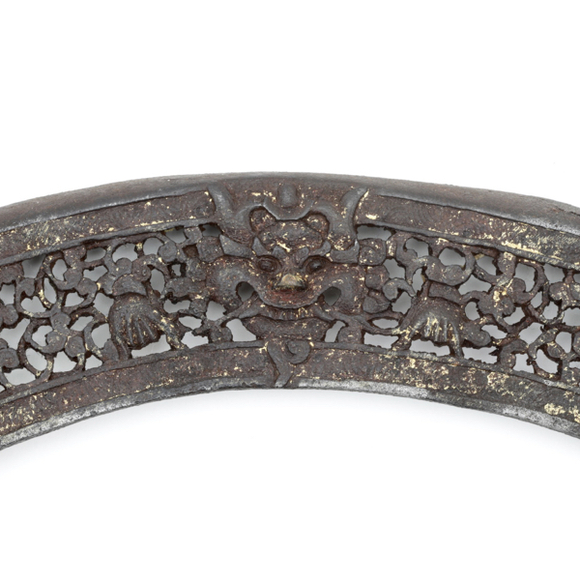This kind of fine work is typical for Tibetan work of the 15th-16th centuries.

91.2 cm / 36 inch
959 grams
Tibet, probably Ü-Tsang region.
Steel, iron, brass, gold, silver.
17th - 19th century.
Description
A large Tibetan sword or dpa'dam, representing its classic form. The long, straight single edged blade is still in original, unpolished condition. It still shows its hairpin folded construction so common for swords from the Tibetan cultural sphere. The alignment of the edge tells us something about how it was worn. When at the left hip, hilt forward, the edge of this sword points downward. Such Tibetan swords were customarily worn in a scabbard suspended from the belt, much like the Japanese tachi whereas tibetan swords with their edge aligned the other way would be worn tucked under a sash, edge up, for a quick draw. Ours is a somewhat rarer configuration, but there is another Tibetan sword with the edge aligned in the same fashion in the Metropolitan Museum under accession number 36.25.1464.1

The inscription on the blade is probably an abbreviation of a popular protective mantra.
The hilt is fitted in good quality iron fittings with remains of golden damascening. The trefoil pommel and its matching ferrule are decorated openwork scrollwork on the outer face, and swastika fretwork on the sides. The pommel holds s single turquoise in a brass mount. Turquoise is a very popular stone in Tibetan culture, it was thought to possess protective and healing powers. The grip itself is wood wrapped with silver wire, with two indentations at the obverse side, a typical feature for these. The guard is of a so-called "double trefoil" design with fluted edges. There are also remains of golden damascening on the outside edge of the guard.
Condition
Good condition overall. Some minor play in the handle. Blade has some damage, a cut in the spine -probably from another sword- and some minor edge-damage here and there, all nicks, no cracks. All damage comes with deep patina, meaning it happened a long time ago during the sword's working life. Scabbard missing.
Conclusion
A large and impressive Tibetan sword or dpa'dam. It is a nice, representative example of its kind. The hilt is well-made, of iron with good geometry in all parts and with remains of golden damascening. It even retains its original turquoise stone. The edge is aligned so that it would point downwards when worn in a suspended scabbard on the left side.
Sold to the Metropolitan Museum of Art in New York.
See: accession number 2016.726.
NOTES
1. The same sword is published in Donald J. Larocca. Warriors of the Himalayas; Rediscovering the Arms and Armor of Tibet. The Metropolitan Museum of Art, New York. Yale University Press, New Haven and London. Catalog number 61, page 157.












With a very fine Nepalese blade, but kard-like hilt and scabbard.






